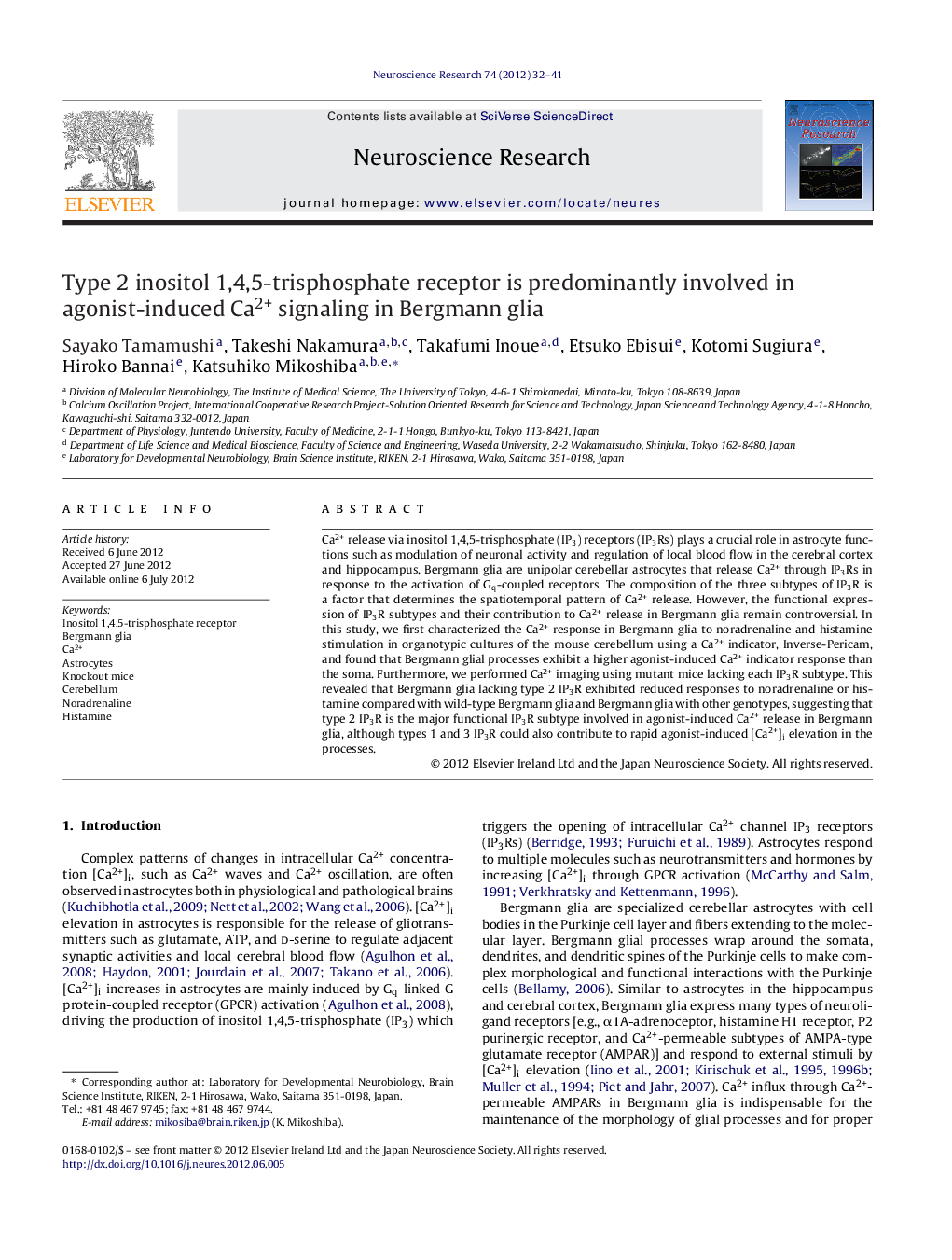| Article ID | Journal | Published Year | Pages | File Type |
|---|---|---|---|---|
| 4351470 | Neuroscience Research | 2012 | 10 Pages |
Ca2+ release via inositol 1,4,5-trisphosphate (IP3) receptors (IP3Rs) plays a crucial role in astrocyte functions such as modulation of neuronal activity and regulation of local blood flow in the cerebral cortex and hippocampus. Bergmann glia are unipolar cerebellar astrocytes that release Ca2+ through IP3Rs in response to the activation of Gq-coupled receptors. The composition of the three subtypes of IP3R is a factor that determines the spatiotemporal pattern of Ca2+ release. However, the functional expression of IP3R subtypes and their contribution to Ca2+ release in Bergmann glia remain controversial. In this study, we first characterized the Ca2+ response in Bergmann glia to noradrenaline and histamine stimulation in organotypic cultures of the mouse cerebellum using a Ca2+ indicator, Inverse-Pericam, and found that Bergmann glial processes exhibit a higher agonist-induced Ca2+ indicator response than the soma. Furthermore, we performed Ca2+ imaging using mutant mice lacking each IP3R subtype. This revealed that Bergmann glia lacking type 2 IP3R exhibited reduced responses to noradrenaline or histamine compared with wild-type Bergmann glia and Bergmann glia with other genotypes, suggesting that type 2 IP3R is the major functional IP3R subtype involved in agonist-induced Ca2+ release in Bergmann glia, although types 1 and 3 IP3R could also contribute to rapid agonist-induced [Ca2+]i elevation in the processes.
► Ca2+ response in Bergmann glia was observed in slice cultures using Inverse-Pericam. ► Bergmann glial processes exhibited a higher agonist-induced Ca2+ response than the soma. ► We identified the functional IP3R subtype in Bergmann glia. ► Type 2 IP3R was the major functional IP3R subtype in Bergmann glia. ► Types 1 and 3 IP3R could also contribute to rapid [Ca2+]i elevation in the processes.
